This program selects Microchip PIC16LF1599 for design, and supports up to 17 Touch Channels. Microchip's touch solution can adapt to a variety of abnormally noisy electromagnetic environments through car-level strict ESD/EMI anti-interference capabilities and EMC compatibility, such as operating in thick gloves, stylus, pressure sensing, waterproof and moisture-proof, strong light and other environments.
With the outbreak of the new crown epidemic since the beginning of 2020, contactless channels are now used in most public places. For example, the elevator call system has many places using Bluetooth, wifi infrared, voice, etc. to call the elevator, but these methods There are also some changes in usage habits. For example, Bluetooth wifi must be connected to a mobile phone or related apps next week or follow WeChat applets before it can be used. This makes it more time-consuming and inconvenient to use. Infrared induction is used as a call elevator. In the case of false triggering, the infrared trigger will only be triggered when something arrives. If voice triggers are crowded, the environment will be noisy and easier to misidentify. To solve this problem, a call controller based on Microchip PIC16LF1559 proximity sensing It is relatively suitable.
This solution mainly introduces Microchip's touch button and proximity sensor elevator call solution. At present, many MCU products such as PIC and Atmel have 1D Touch function. 1D Touch functions include touch buttons, sliders, scroll wheels, and proximity sensors. This program selects Microchip PIC16LF1599 for design, and supports up to 17 Touch Channels. Microchip's touch solution can adapt to a variety of abnormally noisy electromagnetic environments through car-level strict ESD/EMI anti-interference capabilities and EMC compatibility, such as operating in thick gloves, stylus, pressure sensing, waterproof and moisture-proof, strong light and other environments.
Before entering the design, first introduce the principle of Microchip's touch solution. PIC16LF1599 uses mTouch technology, through the differential capacitive voltage divider (CVD) method, a simple description is that the finger press causes the capacitance change, thereby detecting the voltage change. CVD is a charge/voltage-based technology that uses only an analog-to-digital converter (ADC) module to measure the relative capacitance on the pin. Since only a common PIC device peripheral is needed, this technology can be implemented on most MCUs. This technique performs relative capacitance measurement based on the size of the internal ADC sample and hold capacitance. The specific steps are divided into:
1: Pre-charge the capacitor, charge the two capacitors to opposite voltages. The first execution is "Sampling A". The second time is "Sample B".
2: Connect the capacitors and stabilize them, connect the two capacitors in parallel and stabilize the charge. As the external capacitance increases, the initial charge will increase until the internal capacitance does not change, so its charge remains constant.
3: ADC conversion, the final voltage on Chold is determined by the relationship between the size of the external capacitor and the size of the internal capacitor;
Capacitive proximity sensing detects changes in capacitance on the sensor due to user touch or proximity. For the Microchip solution, the sensor can be any conductive material connected to the pins of the MCU through an optional series resistor. Generally, any conductive objects or objects with high dielectric constant near the sensor will affect the sensor capacitance. The scanning method of the capacitive proximity sensor is the same as that of the capacitive touch sensor. The device continuously monitors the capacitance of the sensor and waits for a major change to occur. The change of the proximity signal will be significantly smaller than the change of the touch signal, because it must be effective for a long distance in air (not plastic or glass), which is the most likely electric field medium. In order to maintain reliable detection, the system needs to maintain a good Signal-to-Noise Ratio (SNR)
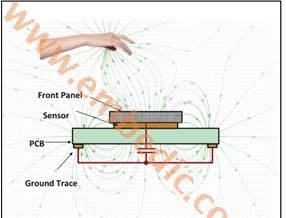
Development and design instructions:
MCC is an image developed by microchip for 8-bit 16-bit microcontrollers
Interface configuration program and a tool to call related peripheral library functions,
Can greatly save the project development cycle.
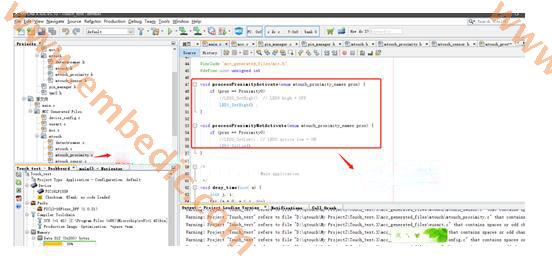
Use Data Visualizer's USART to debug the touch function and the Signal-to-Noise Ratio (SNR).
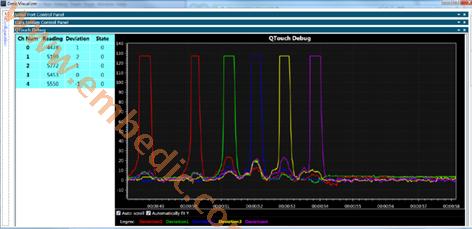
The effect of Sensor size on sensing distance.
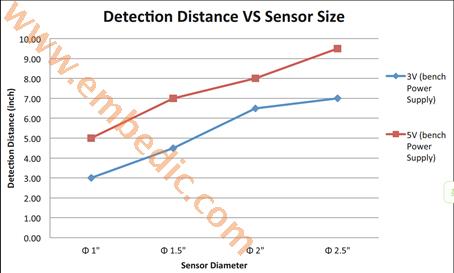
Sensor wiring is mainly wrapped with Guard to strengthen anti-interference and waterproofing.
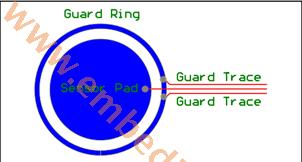
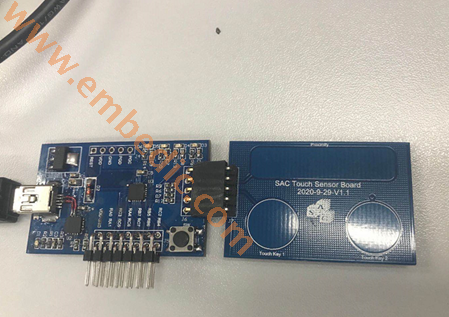
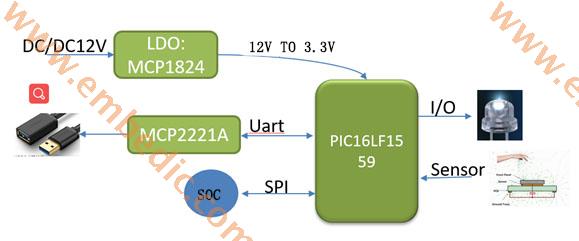
► PCB drawings

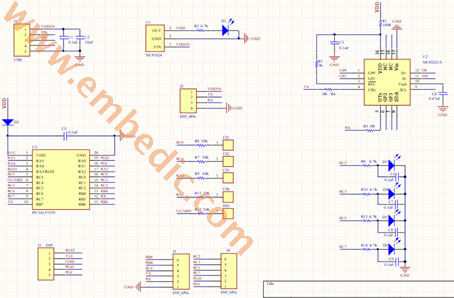
IC MCU 8BIT 7KB OTP 28SSOP
IC MCU 8BIT 160KB FLASH 52LQFP
IC MCU 8BIT 288KB FLASH 52LQFP
IC MPU Q OR IQ 800MHZ 689TEBGA
1
2
3
4
5
6